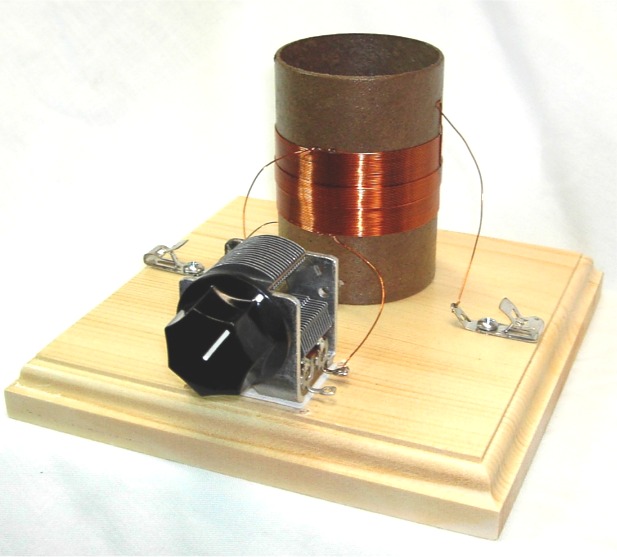|
Главная >
Radiokit >
Bucher crystal radio QRM rejector |


Elmer E. Bucher (pronounced, "boo-cher") was an instructing engineer at the
Marconi Wireless Telegraph Co. of America in the very early pioneering days of
radio just after the turn of the Twentieth Century. Mr. Bucher was a great
mentor to thousands of early amateur and professional operators in the fields
of wireless telegraphy and radio. His mentoring was so well known that even
today, Radio Amateurs who mentor novices in getting their "Ham" licenses are
commonly called, "Elmers." His book, "Practical Wireless Telegraphy", was
published from 1917 to 1920 and covered everything from batteries and magnets
to setting up and operating a complete wireless station. In his own words,
"...The author has endeavored to give the non-technical student and the
practical telegraphist an understanding of the functioning of present day
commercial wireless telegraph apparatus:" This very effective wave trap, notch
filter, or "QRM Rejector" is named afterElmer E. Bucher for his mentoring so
many people in the field of wireless that his name lives on with experienced
radio amateurs "Elmering" radio beginners every day. QRM is radio operator
language for man-made interference. The most difficult problem facing crystal
radio DXers who live in or near a city is trying to hear weak DX stations while
being bombarded by strong local stations. A very effective method of overcoming
this problem is to use a rejector trap. This circuit is connected in-series,
between your antenna and your radio's antenna connector. When it is tuned to
an interfering A.M. station, it will absorb most of the signal at that
frequency and thus allows you to hear the weak stations on either side of this
frequency. Several of these circuits can be connected together in-series if
necessary to reject several strong stations. The Bucher Crystal Radio QRM
Rejector works on the A.M. Broadcast Band from about 500 KHZ to over 1700 KHZ.
It works very well when used with Short Wave crystal sets and one tube radios
that are being "jammed' by a strong local A.M. station. Building this QRM
Rejector is accomplished using simple assembly techniques and high quality
parts. The air variable capacitor is the same fine American-made unit that we
use on our Armstrong One Tube Radio Kits, Dunwoody High Performance Crystal
Radio Kits, and Morgan Crystal Radio Antenna Tuners. This kit is based on our
ELECTRONICS HANDBOOK Magazine article, "How To Build A Rejector (QRM) Circuit",
reprints of which are available in our "Literature" Link. This is an improved
version of that QRM Rejector. Amazing results can be expected with this QRM
Rejector. It has been used successfully used with our Dunwoody High Performance
Crystal Radio and with our Armstrong One Tube Radio. It also works well with
our Cornell WW-II Foxhole Radio and our Pickard Crystal Radio. One customer
says, "I am very impressed with how narrow this thing tunes and how it almost
completely eliminates a very powerful nearby station." Highest quality parts
are used throughout. The pre-drilled routed baseboard is made for us by
TOLEWOOD.COM from clear furniture grade pine that can be stained for an
attractive vintage look. The pre-punched coil form is made from the same heavy
cardboard shipping tube as our Armstrong One Tube Radio. A quality black
Bakelite knob contributes to the vintage appearance. Nickel-plated brass
fahnestock clips are used for the input and output connections. All parts,
screws, and wire are included in this fine quality kit. The easy-to-understand
instructions were designed for beginners, however the coil winding is at a
level of difficulty for more experienced builders. Soldering is required. The
use of Super Glue is also required. (Customer supplies gel-type super glue
because this product doesn't store well and must be fresh in order to work
properly)
Complete kit including all parts and easy to follow instructions:
Source: http://www.xtalman.com/kits.html
|